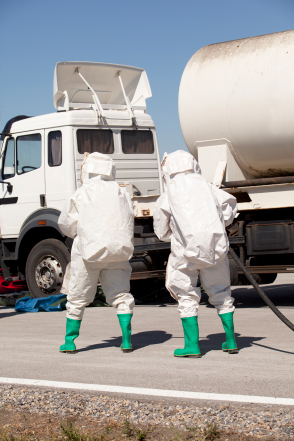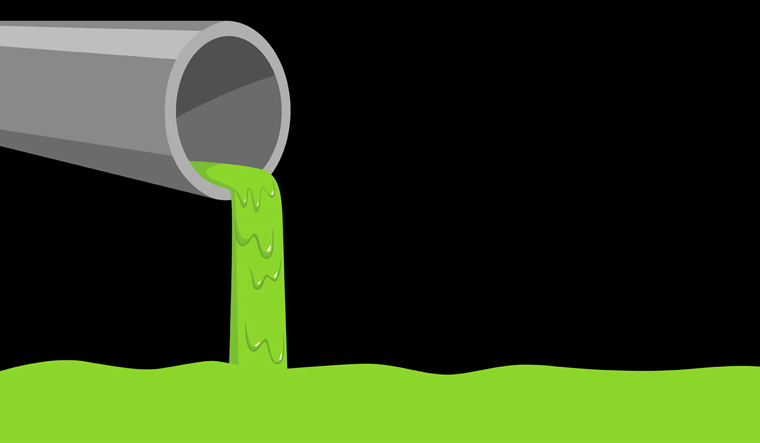Industrial Wastewater Treatment: Custom-made Solutions for Complex Wastewater Difficulties
Industrial Wastewater Treatment: Custom-made Solutions for Complex Wastewater Difficulties
Blog Article
How Liquid Waste Disposal Works: An In-depth Introduction of Methods and Technologies Employed

Review of Liquid Waste Types
The intricacy of fluid waste kinds requires a thorough understanding of their characteristics and implications for disposal. Liquid waste can broadly be classified right into several types, including commercial, municipal, agricultural, and unsafe waste. Each category displays unique homes, requiring particular administration strategies to minimize environmental and health threats.
Industrial liquid waste stems from manufacturing procedures and usually contains a series of impurities, such as hefty metals, solvents, and organic compounds. Municipal fluid waste, largely consisting of wastewater from houses and business facilities, contains organic issue, nutrients, and microorganisms (industrial wastewater treatment). Agricultural fluid waste, consisting of runoff from farms, may contain plant foods, pesticides, and animal waste, positioning risks to water quality and environments
Dangerous fluid waste is defined by its poisoning, reactivity, or potential to trigger harm. Understanding these varied liquid waste types is critical for establishing effective disposal techniques and making certain compliance with environmental laws.
Physical Therapy Methods

Testing is the preliminary action, where larger fragments and particles are eliminated from the fluid waste making use of screens or grates. This procedure shields downstream devices from damages and makes certain smoother operation. Following screening, sedimentation utilizes gravitational pressure to different solids from liquids. In sedimentation tanks, much heavier fragments clear up near the bottom, forming a sludge layer, while the clarified fluid can be more treated.
Purification is an additional crucial technique that entails passing the fluid via permeable products, such as sand or membranes, to catch smaller sized bits. This step improves the top quality of the liquid, making it ideal for succeeding therapy procedures.

Chemical Therapy Strategies
Chemical therapy strategies are necessary for efficiently taking care of liquid waste, especially in dealing with liquified and colloidal pollutants that physical approaches might not adequately eliminate. These strategies utilize numerous chemical representatives to counteract, speed up, or transform hazardous compounds into much less dangerous forms.
One common technique is coagulation and flocculation, where chemicals such as alum or ferric chloride are included in promote the gathering of suspended bits. This procedure improves sedimentation, permitting easier removal of the resulting sludge. Furthermore, oxidation processes, utilizing representatives like chlorine or ozone, are employed to break down complex natural compounds and virus, making the waste much safer for discharge or additional treatment.
Neutralization is an additional crucial technique, which changes the pH of acidic or alkaline waste streams to neutral degrees, avoiding possible damage to downstream systems and the environment. Furthermore, progressed oxidation processes (AOPs) utilize mixes of oxidants and ultraviolet light to degrade relentless contaminants, attaining a higher level of therapy performance.
Organic Therapy Processes
Organic treatment processes play a critical role in the monitoring of fluid waste by making use of microbes to decompose raw material and minimize pollutant degrees. These processes can be extensively categorized into anaerobic and aerobic treatments, each using details microbial areas to achieve reliable waste my link deterioration.
Cardio treatment involves using oxygen to help with the break down of organic materials by bacteria. This process is commonly carried out in triggered sludge systems, where aeration tanks give a conducive atmosphere for microbial growth, leading to the oxidation of natural pollutants. The resultant biomass can be separated from treated effluent via sedimentation.
In contrast, anaerobic treatment occurs in the lack of oxygen, counting on different bacteria to damage down raw material. This approach is especially beneficial for high-strength waste, as it generates biogas, an eco-friendly power source, while decreasing sludge manufacturing. Technologies such as anaerobic digesters are regularly utilized in community and industrial applications.
Both cardiovascular and anaerobic biological treatments not just lessen the environmental impact of fluid waste yet additionally promote source recovery, making them crucial parts of lasting waste administration strategies. Their performance, flexibility, and performance sustain their extensive execution across various industries.
Emerging Technologies in Disposal
Ingenious approaches to liquid waste disposal dig this are swiftly evolving, driven by innovations in innovation and an enhancing emphasis on sustainability. Amongst these arising modern technologies, membrane bioreactors (MBRs) have gained grip for their ability to combine biological treatment with membrane layer filtration, leading to top notch effluent that can be reused in different applications. MBRs make it possible for smaller sized footprints and a lot more reliable procedures compared to conventional systems.
Another appealing advancement is the use of anaerobic food digestion combined with nutrient healing technologies, which not only deals with liquid waste yet also creates biogas and recovers useful nutrients like nitrogen and phosphorus. This dual benefit boosts source performance and decreases ecological impact.
Additionally, progressed oxidation processes (AOPs) are being embraced for the deterioration of intricate organic toxins. These approaches make use of effective oxidants and catalysts to break down contaminants at the molecular level, supplying a highly reliable option for challenging waste streams.
In addition, the assimilation of man-made knowledge and artificial intelligence in waste administration systems is enhancing operational performance and anticipating upkeep, resulting in lowered expenses and enhanced ecological compliance. These innovations show a significant shift towards more sustainable and effective fluid garbage disposal practices.
Conclusion
In final thought, effective fluid waste view disposal demands a detailed understanding of various techniques and technologies. By constantly advancing these approaches, it ends up being possible to resolve the expanding obstacles linked with liquid waste, inevitably contributing to ecological security and source recuperation.
Fluid waste disposal is a critical element of environmental administration, needing an extensive understanding of numerous strategies and innovations customized to various waste types. Fluid waste can generally be classified into several types, consisting of commercial, community, agricultural, and hazardous waste. Agricultural fluid waste, consisting of drainage from ranches, may have plant foods, chemicals, and animal waste, posing dangers to water high quality and ecosystems.
Different physical treatment methods play a critical role in taking care of fluid waste properly - industrial wastewater treatment.In final thought, efficient liquid waste disposal necessitates a comprehensive understanding of numerous strategies and innovations
Report this page